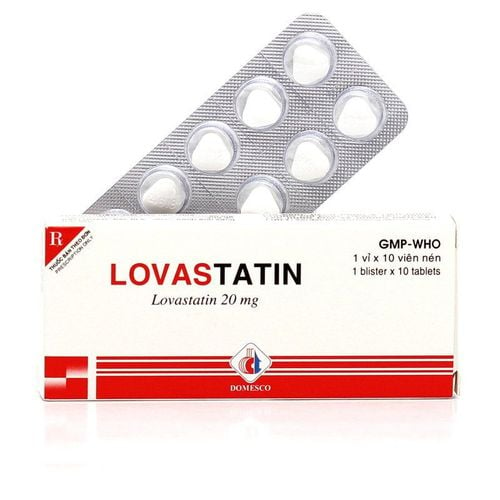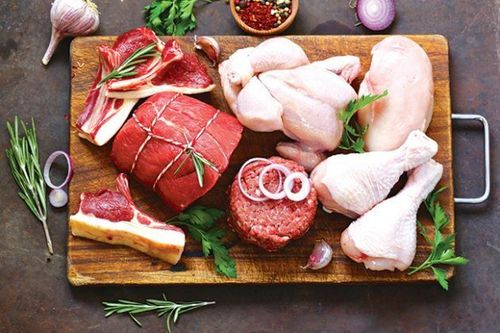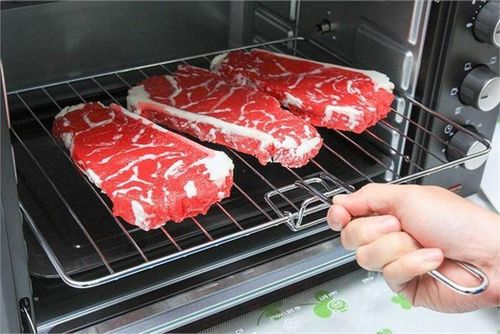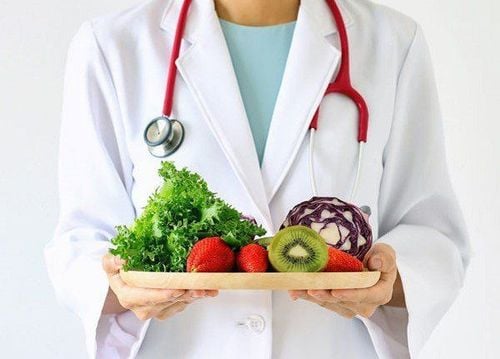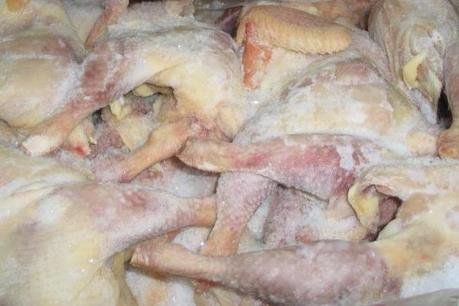This is an automatically translated article.
Meat is divided into two main categories, white meat and red meat based on a few different factors such as color. So why is there a difference between these two meats? The following article will help you to explain this question and give you more information about the benefits of red meat compared to eating white meat.
1. The difference between red meat and white meat
The main difference between red and red meat is the amount of myoglobin found in animal muscles. Myoglobin is a protein in muscle tissue that binds oxygen so it can be used for energy.
In meat, myoglobin becomes the main pigment responsible for its color, as it imparts a bright red tone when exposed to oxygen. Red meat is higher in myoglobin than white meat, which is what brings out their color.
However, there are various factors that can also affect the color of the meat such as the age of the animal, species, sex, diet and activity level.
For example, muscles that are exercised have higher levels of myoglobin because they need more oxygen to work. This means that meat coming from these types of animals will be darker red. Furthermore, packaging and processing methods can lead to a change in the color of the meat.
The optimal surface color of raw meat from beef, lamb, pork and veal should be cherry red, dark cherry red, grayish pink and light pink, respectively. For live poultry, the color can vary from bluish-white to yellow.
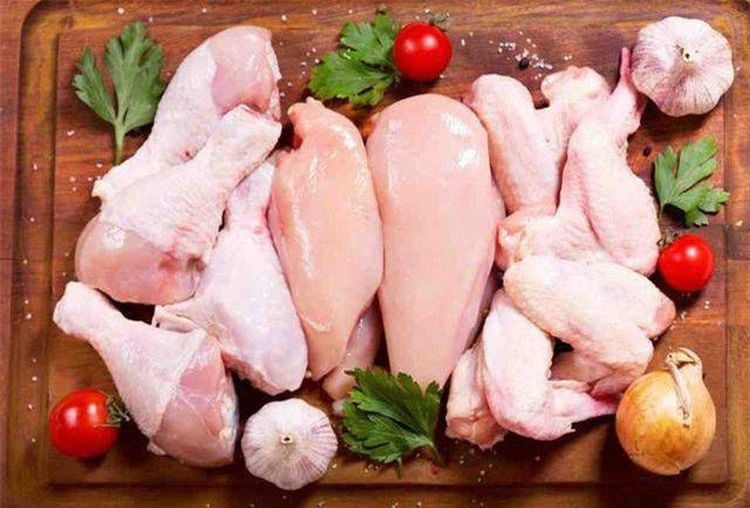
Hàm lượng myoglobin trong thịt trắng thấp hơn so với thịt đỏ
According to the scientific community and food agencies, such as the United States Department of Agriculture (USDA), pork is classified as red meat. There are two main reasons pork is classified as red meat:
First, pork has more myoglobin than poultry and fish. As such, pork is classified as red meat even though it is not bright red and even if it becomes paler when cooked. Second, pigs are farm animals, pigs are usually together with cows, sheep and calves and all livestock are classified as red meat.
2. Is eating red meat good?
Question: Does eating red meat increase the risk of cancer and heart disease?
Answer: As for heart disease, the answer is pretty obvious. Some types of red meat are high in saturated fat, which raises blood cholesterol. High levels of LDL cholesterol increase the risk of heart disease.
When it comes to cancer, the answer is not so obvious. Many researchers say that red meat increases the risk, especially for colorectal cancer.
A recent National Institutes of Health study of more than half a million older Americans concluded that those who ate a lot of red and processed meat over a 10 year period years were more likely to die earlier than those who ate less. People who ate about 4 ounces of red meat per day were more likely to die from cancer or cardiovascular disease than those who ate the least, about half an ounce per day.
The meat industry believes there is no link between red meat, processed meat and cancer, and believes that lean red meat is suitable for a heart-healthy diet.
However, many studies have also found similar associations. Another who followed more than 72,000 women for 18 years found that those who ate a Western-style diet high in red and processed meat, desserts, refined grains and chips had an increased risk of disease. heart disease, cancer, and death from many other causes. There is an association between consumption of red meat and processed meat and cancer, especially colorectal cancer, says Marji McCullough, PhD, a nutritional epidemiologist with the American Cancer Society.
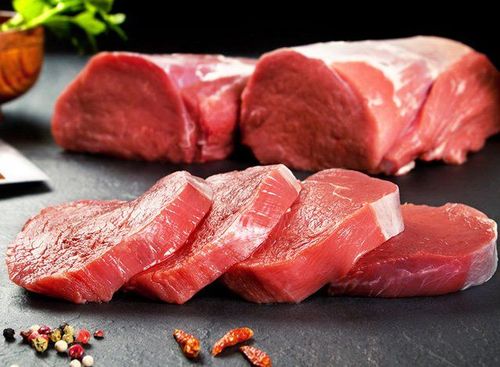
Bệnh nhân mắc bệnh tim nên hạn chế ăn thịt đỏ
After a systematic review of scientific studies, an expert panel of the World Cancer Research Fund and the American Institute of Cancer concluded in 2007 that red or processed meat is cause of some cancers. There is strong evidence for a link between red meat, processed meat and colorectal cancer, their report said, but results are still unclear for lung, esophageal, and stomach cancers. , pancreas and endometrium.
Question: If eating red meat increases the risk of cancer, what is the specific cause?
Answer: The carcinogenic mechanism of red meat is still unclear, but there are several specific mechanisms that researchers are suspecting and studying, including:
Saturated fat, which is involved colon and breast cancer as well as heart disease Carcinogens that form when meat is cooked heme iron, which is the type of iron found in meat, can form compounds that can damage cells , leading to cancer. Question: Is eating red meat good?
Answer: Compared to eating white meat, red meat contains more iron, which many teenage girls or women during childbirth often lack. The heme iron found in red meat is easily absorbed by the body. Red meat also provides vitamin B12, which helps make DNA and keep nerve cells and red blood cells healthy, and red meat contains zinc, which helps the immune system function properly. Besides, red meat also provides protein, which helps build bones and muscles.
Nutritionists say, beef is one of the most nutrient-dense foods. Eating a 3-ounce steak has only 180 calories, but you get 10 essential nutrients.
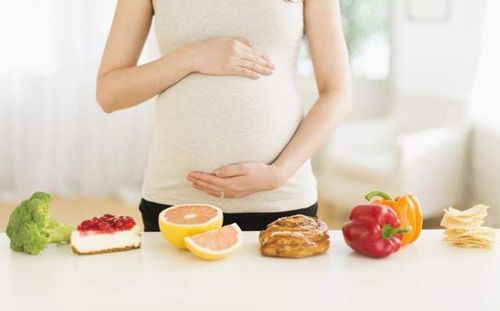
Mẹ bầu nên tăng cường ăn thịt đỏ để bổ sung sắt
Question: How much red meat should I eat?
Answer: Most nutritionists suggest focusing on reasonable portion sizes and eating lean red meat.
To figure out exactly how much red meat you need, you need to consider two factors:
Are you consuming more calories than you burn? Do you eat more red meat than other foods like fruits, vegetables and whole grains? You do not need to eliminate red meat from your diet, but you do need to choose lean meat and a reasonable portion with nutritional needs.
US government guidelines recommend 5 to 6.5 ounces of protein per day from a variety of food sources, including lean meats, nuts, and seafood. Therefore, you need to calculate the amount of protein from the foods that you eat, including red and white meat, and divide this amount of protein appropriately in your daily meals.
According to the American Institute for Cancer Research, a nonprofit that focuses on cancer prevention through diet and physical activity, it recommends no more than 18 ounces of cooked red meat per day. the week. The organization also recommends avoiding all processed meats, such as hot dogs, cold cuts, ham, and bacon, due to an increased risk of colon cancer.
Question: What are the criteria for a lean red meat?
Answer: Meat can be labeled as lean if the 3-ounce serving contains less than 10 grams of fat, 4.5 grams of saturated fat or less, and less than 95 milligrams of cholesterol.
If you buy beef, check the U.S. Department of Agriculture classification. Beef labeled as premium beef is the highest grade but also has the highest fat. Most supermarkets sell beef graded into different products.
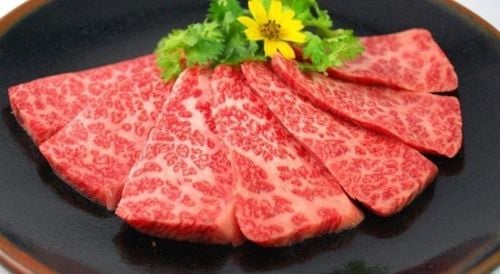
Thịt bò cao cấp có hàm lượng chất béo cao nhất
Question: Is grass-fed beef better than grain-fed beef?
Answer: Grass-fed cows are leaner than grain-fed cows, which results in a lower total fat and saturated fat content of grass-fed cows. Grass-fed beef is also high in omega-3 fatty acids. But the total amount of omega-3s in both types of beef is relatively small. Therefore, foods like fish, vegetable oils, and nuts are better sources of omega-3s than beef.
Question: Does grilling red meat cause cancer?
Answer: Any meat that is cooked to high temperatures can turn food compounds into substances that increase the risk of cancer, including red meat, poultry, and fish. They called these substances heterocyclic amines (HCAs) and polycyclic aromatic hydrocarbons (PAHs).
Question: How to reduce carcinogenic compounds when baking?
A: You should take some steps to help prevent potentially carcinogenic compounds from forming during baking or reduce your exposure to them, specifically:
Choose lean red meat when grilling to reduce the risk of burning or forming smoke, which can leave carcinogens on the meat. If grilling, grill over medium heat or indirectly, rather than over high heat, which can cause burning and overcooking. Do not overcook. Thoroughly cooked meat contains many carcinogenic compounds. But make sure the meat is cooked to a temperature that will kill the potentially disease-causing bacteria contained in the food. For steak, cook to 145 to 160 degrees F; For burgers, cook to 160 degrees. Marinating meat can reduce the formation of HCAs. You should choose marinades without sugar, as sugar can burn the surface of the meat. Return meat often. Use tongs or a spoon instead of a fork to prevent gravy that could drip onto the fire and cause a fire. Do not grill a lot of meat at once. Instead of just grilling meat, try barbecue skewers that include both fruits and vegetables to grill. Trim fat from meat before cooking and remove any burnt pieces before serving.
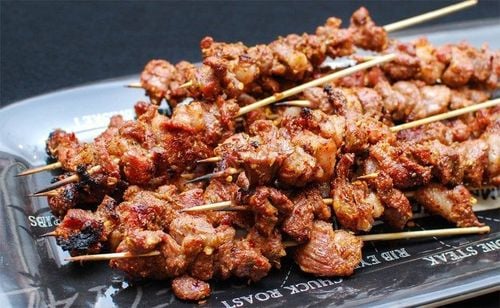
Trong quá trình nấu ăn, hạn chế việc nấu thịt quá chín
Red meat and white meat both contain good amounts of nutrients for the body, but to ensure health you should process and use them appropriately, avoiding the risk of disease.
Diet greatly affects your health. When the body appears abnormal and there are suspicions of cancer, you should go to a reputable medical facility for examination and accurate diagnosis. Currently, Vinmec International General Hospital provides cancer screening packages with high accuracy. For more information, you can contact Vinmec Health System nationwide, or register online.
Please dial HOTLINE for more information or register for an appointment HERE. Download MyVinmec app to make appointments faster and to manage your bookings easily.
Reference source: webmd.com; healthline.com




